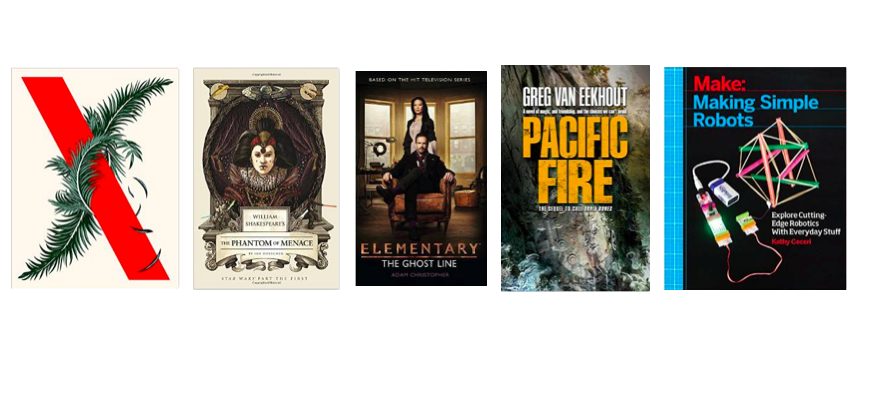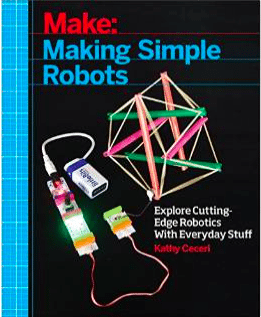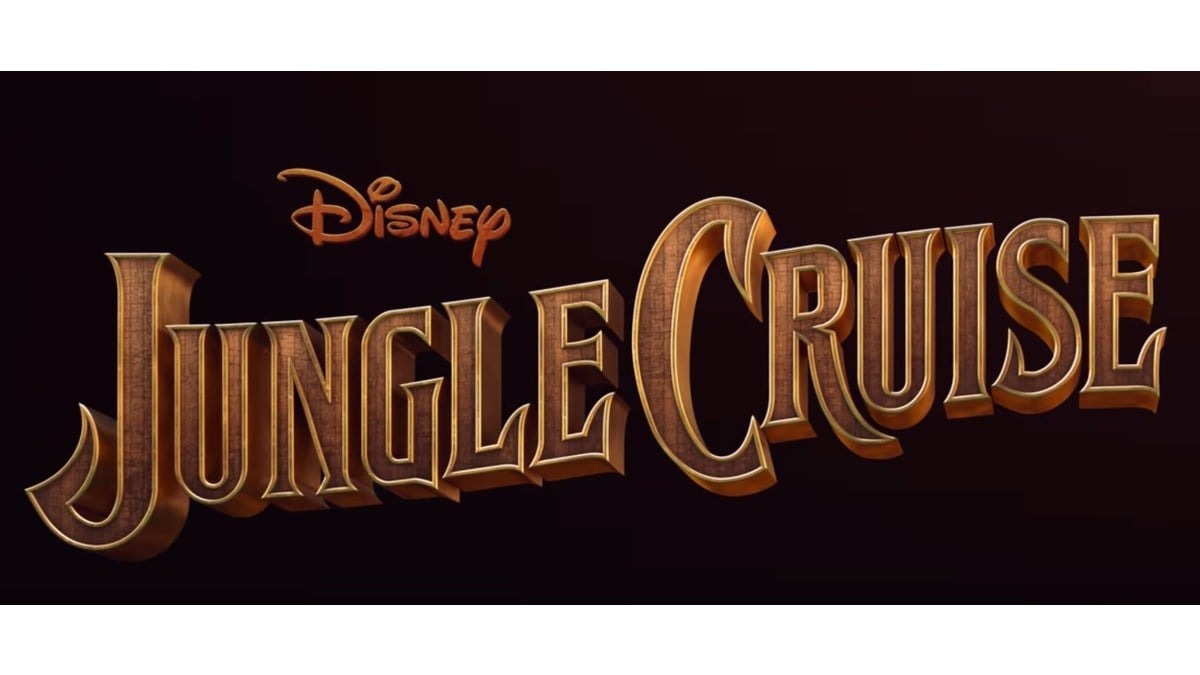I don’t think I’ve got it quite as bad as fellow GeekDad writer Jonathan Liu, but occasionally my book stack starts to get a bit high again and I feel the urge to whittle it down a bit. My reading interests are all over the map, and it’s sometimes difficult to grab enough books in a particular genre to review together… so please forgive me for the mishmash of books below, of which I hope at least one or more grabs your interest and proves a worthy purchase.
William Shakespeare’s The Phantom of Menace by Ian Doescher
Ian Drescher did an outstanding job with his take on how Shakespeare might have penned the original Star Wars trilogy (Episodes IV through VI), and he’s now set his goal to convert Episodes I through III by channeling The Bard.
As with the previous three books, the story is all there… just not in the language you might expect. Broken into five acts, Doescher’s retelling may actually be more inviting to those who might not consider themselves fans of Episode I with more focused dialogue on the intrigues and politics that ran rampant through that film. Not a fan of Jar-Jar? Don’t worry–Doescher has a slightly different method for addressing both his speech and character, and the only thing you’ll need to decide is whether or not the Jar-Jar featured here is an improvement over the one most fans despise. (I say YES.)
The cover and inside illustrations (by Nicolas Delort) are amazing, especially the full-page imagery that includes great visuals of certain key scenes (including the famous start-stop chase sequence between Qui Gon and Darth Maul using a raised gate in place of force fields). The author even promised something fun for fans of Samuel L. Jackson, so pay careful attention to many bits of Mace Windu’s dialogue and you’ll find some hidden nods-and-winks to the actor’s list of movie credits.
As both Shakespeare and Star Wars fan, I absolutely love reading these books. It’s fun to see the mash-up done right, and even though Episodes I-III will never rate as high in my world as IV-VI, I still enjoy the hard work that Doescher puts into each and every book.
Note: If you missed out on the first three books, Quirk now offers them in a collector’s set complete with a poster of the entire cast in period attire. (Earlier reviews here.)
Elementary: The Ghost Line by Adam Christopher
Now into its third season, the CBS show Elementary continues to provide outstanding stories of Sherlock Holmes in modern-day New York City. With Jonny Lee Miller as Sherlock and Lucy Liu as Dr. Joan Watson, this is not just an American version of the BBC show, Sherlock. With each season having 24 episodes, the writers and actors have been able to develop the characters in some amazing ways; if you’re a Holmes fan and haven’t been watching, you are REALLY missing out.
As with many popular TV shows, a book (or a series) is inevitable, and Titan Books has released the first in a new Sherlock Holmes book series based on the Elementary television show. The first book, The Ghost Line, did not disappoint–and, because it’s a book, the story has much more action and investigation than would be possible in a one-hour television episode. What starts as a simple (almost-locked-room-but-not-quite) mystery takes Holmes and Watson on an underground exploration of New York City that (surprisingly) has never actually been used in the show (to my recollection).
Christopher has to be a fan of the show, and admits as much in the Acknowledgments–he’s got a solid grasp on the humor and speech patterns of Sherlock, as well as offering up the same frustration levels viewers see in Watson, Gregson, and Bell. I loved EVERY PAGE, and I hope the author gets another chance to do another story. (I’m also about 1/3 through reading Christopher’s newest novel–releasing April 21, 2015–The Machine Awakes, a sequel to The Burning Dark, a science-fiction horror story that any fan of Event Horizon will absolutely enjoy.)
Pacific Fire by Greg Van Eekhout
I really enjoy urban fantasy fiction stories–not the romance ones, but the ones that focus on criminals and magic. A random read last year gave me Greg Van Eekhout’s debut novel, California Bones (my review here), and I was hooked and added Van Eekhout to my author watch list for new releases.
In Eekhout’s world, magic is real… and its essence is most powerful in the ancient bones of real and mythical creatures–mastodons, for example, or dragons. By extracting this material from bones (or just plain eating it from a source), the magic can be be yours for a price. Daniel Blackland’s father was killed (and eaten) because of the powerful magic he knew and possessed in his own body, and Daniel’s been on the run for years, surviving as a thief and teaming up with others just looking to stay alive in a California that has broken away from the rest of the United States. When California Bones ended, Daniel had escaped California… but now, with Pacific Fire, it’s ten years later and an injured Daniel is going back because of a powerful weapon that is being created. Daniel has friends and enemies… and a golem named Sam. Daniel’s got some powerful magic, but Sam’s learning, too, and if you enjoyed the twists and turns of California Bones, then you’ll be smiling when you finish this sequel.
Make: Making Simple Robots by Kathy Ceceri
Maker Media puts out some incredible books for makers of all ages. The books are most often full-color with detailed instructions and plenty of sidebars and content for further exploration and learning. I teach a mix of technology camps in the summer, and I’ve been collecting ideas and projects for a beginning robot building camp that I continue to refine as I come upon new ways of teaching the topic and new methods for introducing key concepts.
Kathy Ceceri’s latest book, Making Simple Robots, is a grand slam–the title says it all. While the book is accessible for anyone ages 9 and up, its the younger audience that is really going to get the maximum use from the content here. The book was written for the age 9-12 group, and both the writing style and the projects are a perfect match for that audience.
Throughout the book, Ceceri introduces real robots and explains dozens of differences–materials, method of movement, and how things work are all used as introductory discussions that ease a young reader into a particular project. There are ten projects in all, and each project uses an identical format for its explanation and progression: What is it? What does it do? Where does it come from? How does it work? How to make something similar… etc.
Once you’ve reached the start of a project, you’ll find a detailed list of materials, the estimated cost and time required, a difficulty level, and skills that will be useful (or that will be learned). And then the instructions follow. Ceceri peppers her chapters with dozens of extras–sidebar topics, websites to explore, books to read, and useful tips and advice.
I’ve already found two new projects I’ll be including in my week-long summer camp, and I’m closing in on a third. Most of the book’s projects are reasonable in price, and all of them are suited for the target age group in terms of safety and skills needed. If you’ve got a young maker (age 9 or older) who is showing a strong interest in robots and wants to learn more about how things work and move, this is a great book to hand them.
Area X: The Southern Reach Trilogy by Jeff VanderMeer
With some book series, I simply must go back and re-read one or more of the books prior to a new release in order to re-familiarize myself with the setting and the characters. This is especially true when the books come out with long waits between releases. Jeff VanderMeer’s The Southern Reach Trilogy was different–all three books were released within a 12-month period. This was a good thing, too… the story was intriguing and spooky, with its “quarantined” Area X and the mysterious Southern Reach organization in charge of sending in numerous expeditions (most of which did not return) and evaluating what few artifacts (photos, videos, specimens) make it out.
This is one of those trilogies that I can totally see myself going back and re-reading over and over again through the years. All I can add to Brad Moon’s original review post is this–if you’ve not read The Southern Reach Trilogy, I envy you… between the descriptions of Area X, the dialogue of some very odd characters, and the strange mystery involving the key areas (lighthouse, island, the “tunnel,” and more), you don’t know what’s happened, what will happen, and how it all ends. I do… and I wish I could forget so I could enjoy the three books again and again.
The reason I’m posting this is because I recently was given (as a gift), a hardback edition that collects all three paperbacks. I like my paperback copies, but, for long-term ownership, I’m grinning huge over this hardback because I’ve just finished the second book, Authority (first book is Annihilation and third book is Acceptance) and I’m once again finding myself completely absorbed in the story. Find it and read it. You won’t be sorry. (Meanwhile, I’m hoping to hear in the near future that an annotated version might be developed… there’s lots of explanations and secrets revealed on the official Southern Reach blog, so check it out if you’re a fan.)









